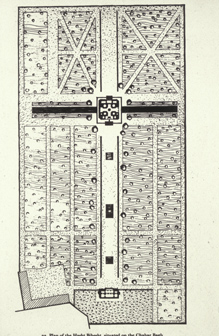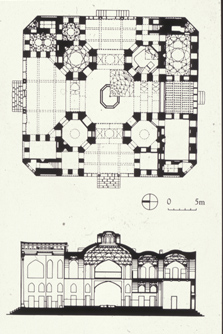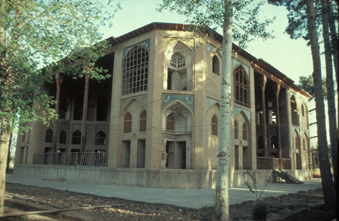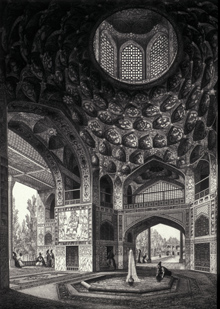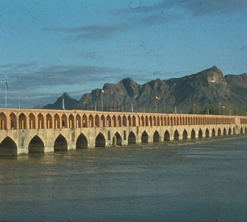AGA KHAN PROGRAM FOR ISLAMIC ARCHITECTURE
Course 4.611/4.613:
15- Isfahan: The Palaces of the Safavid Capital: (Click on images to enlarge)
The Safavids (1501-1732):
Named after a sufi master, Shaykh Safi, the Safavids forged for themselves a genealogy that goes back to ‘Ali, and proceeded to forcibly change Iran into a Shi‘ite state. In the process they shaped the modern image of the Iranian nation.
An example of a painting from the Safavid period emphasizing youth, beauty, and pleasance |
Shah ‘Abbas I (1588-1629):
The greatest Safavid monarch, he moved the capital to Isfahan in 1598 and built there a royal city that extended to the south of the old city and connected it with the Zayandeh river via the Chahar Bagh (Four Gardens) Avenue. Shah ‘Abbas's royal buildings include:
The Maydan-i-Shah:
Among the largest open squares in the world (1700 by 525 ft), it was the focal point of the Shah's plan. Its four sides were lined up with shops on two levels (the second was built slightly later than the first). Each side of the Maydan had a central structure in it:
17th century depiction of the Maydan-i-Shah with the palace area behind it (11-historical view palace complex and flip image) |
Plan of the Maydan-i-Shah and the area built by Shah Abbas behind it |
North: Naqqar Khane (Drum Tower): The monumental portal.
East: Mosque of Shaykh Lutfallah: The royal private oratory.
|
South: Masjid-i-Shah: The congregational mosque.
View of Masjid-i-Shah from the maydan |
West: ‘Ali Qapu (High Gate) Pavilion, planned as the portal to the royal palaces area to the west of the Maydan, it was enlarged and extended at least four times in fifty year (1614-64). It has three stories, with two intermediate mezzanines, fronted by a raised talar overlooking the Maydan. The last level, cruciform in plan, is called the Music Room and its walls are covered with carved, lacquered niches in the shapes of music instruments and flasks.
View of Ali Qapu across the Maydan |
Ali Qapu, section |
Interior music room |
Detail of cutouts in the music room |
West of the Maydan extended the royal gardens with royal pavilions and residences scattered in them:
Plan of the royal gardens and the gardens along the chaharbagh avenue (9-101921 flip) |
The Chehel Sutun (Forty Columns) Pavilion:
Started by Shah ‘Abbas, its plan is a development of the cross-axial, four-iwan, centrally-domed type, Hasht Bihisht. The western block and the talar with its high twenty columns, reflected in the large pool in front of it, were added by Shah ‘Abbas II (1642-67).
Plan of the Chehel Sutun Palace within its garden |
Talar facade of the Chehel Sutun Palace |
Pascal Coste drawing from the iwan towards the talar of the Chehel Sutun palace |
The Hasht Bihisht Pavilion:
Built and incorporated within the royal palaces by shah Suleiman in 1669-70, it represents the classical example of the type. Its central, domed space is surrounded by four octagonal rooms on two stories (hence the eight paradises) along one cross-axis and four iwans along the other cross-axis.
Site plan of the Hasht Bihisht with gardens |
Plan and section of the Hasht Bihisht after Pascal Coste |
General view |
Interior view under the central dome after Pascal Coste |
The urban area extended west and south of the royal gardens and was organized around an axis slightly tilted from the orientation of the Maydan. This axis, called the Chahar Bagh Avenue, terminated in the other side of the river Zayandeh in the new suburb of Julfa, which was reached by the bridge of Allah Verdi Khan, built by this general in 1600.
View of Allah Verdi Khan bridge |
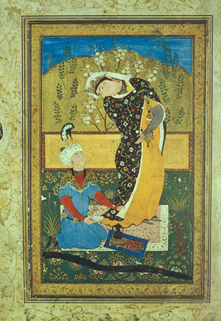
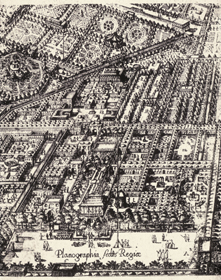
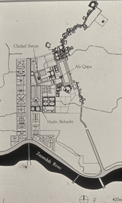
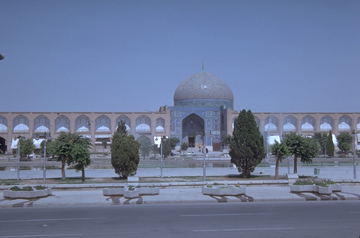 =
=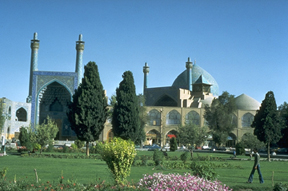 =
= Ext.-15.jpg)
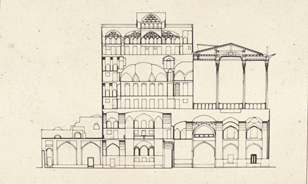
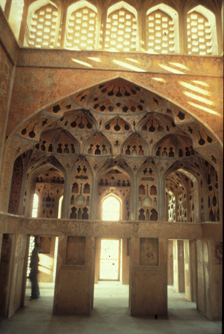
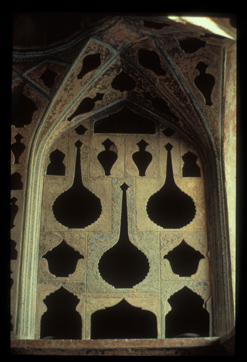
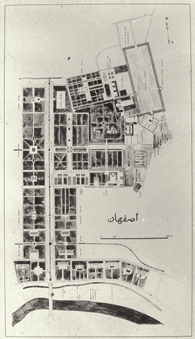

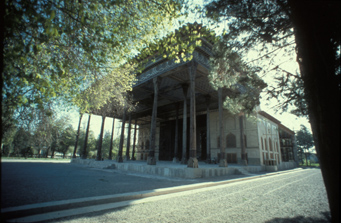
Int,VW out-15.jpg)
